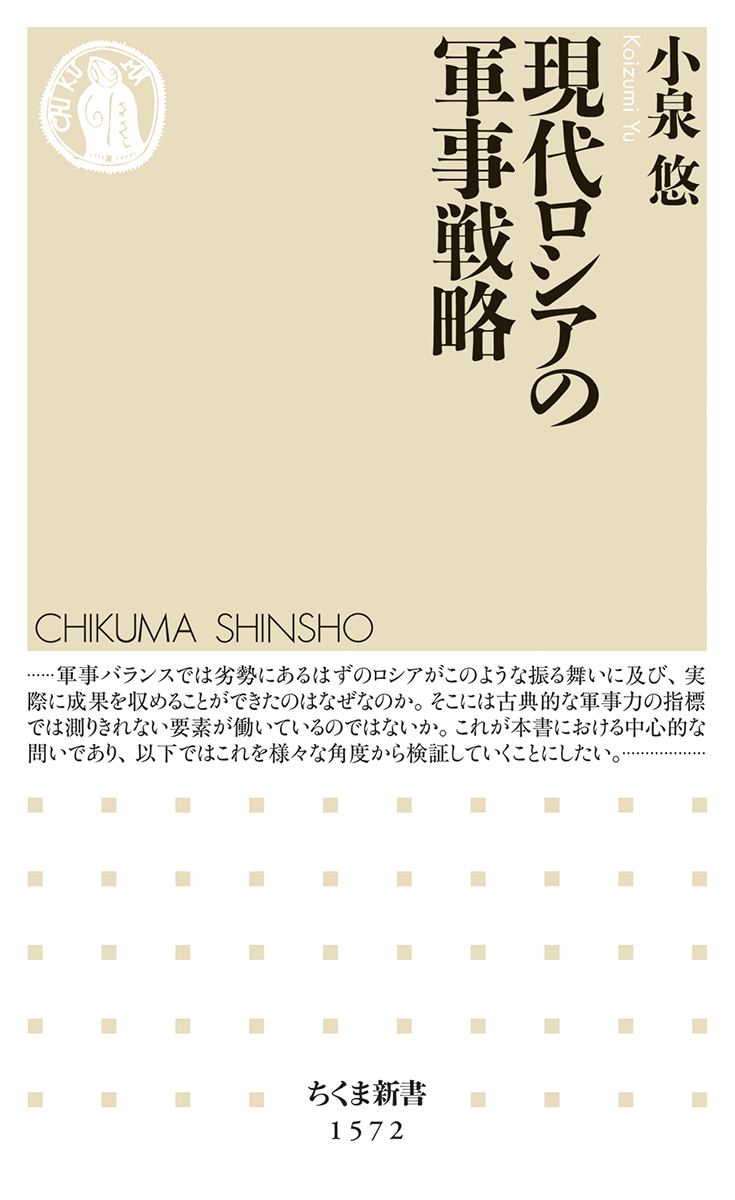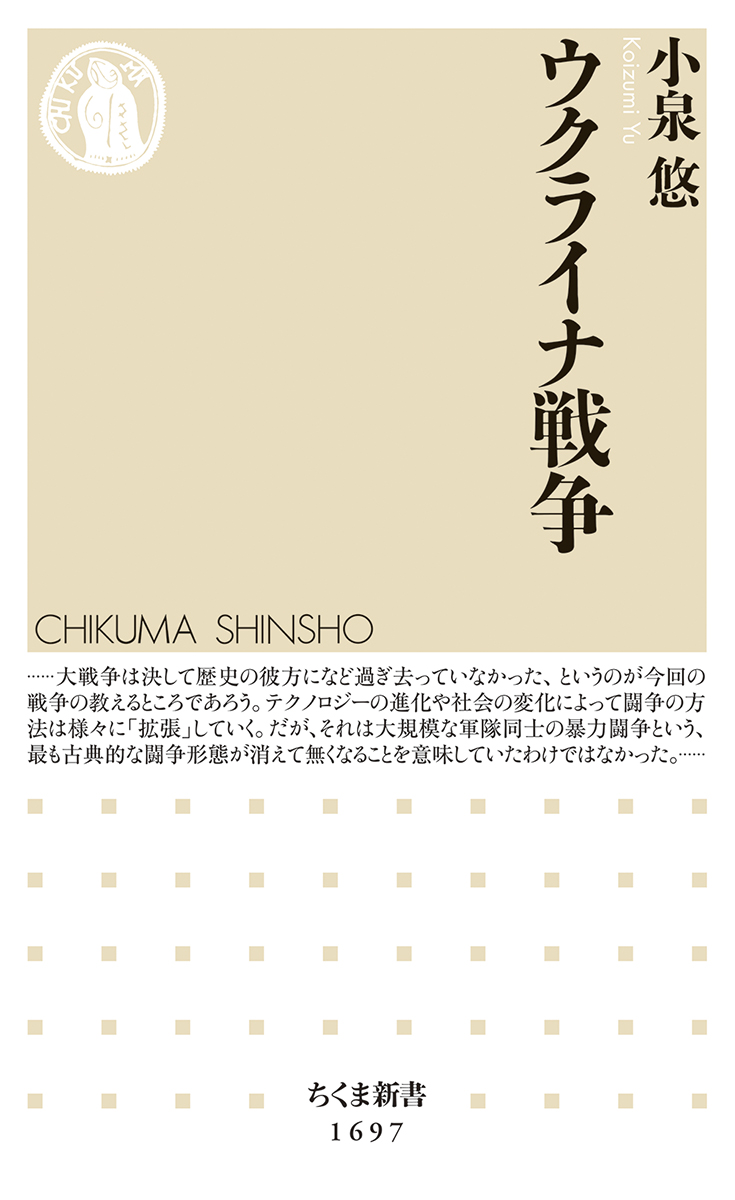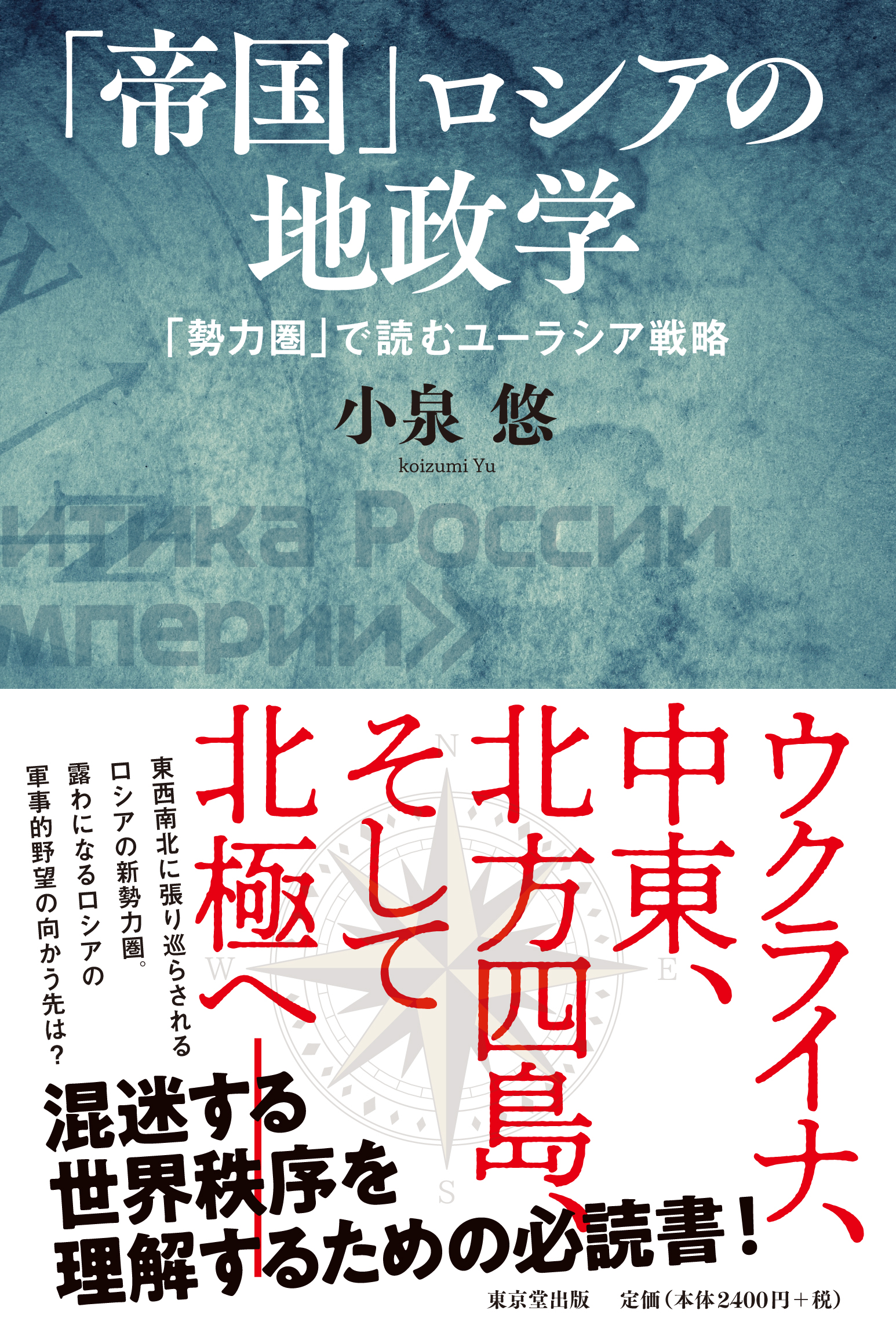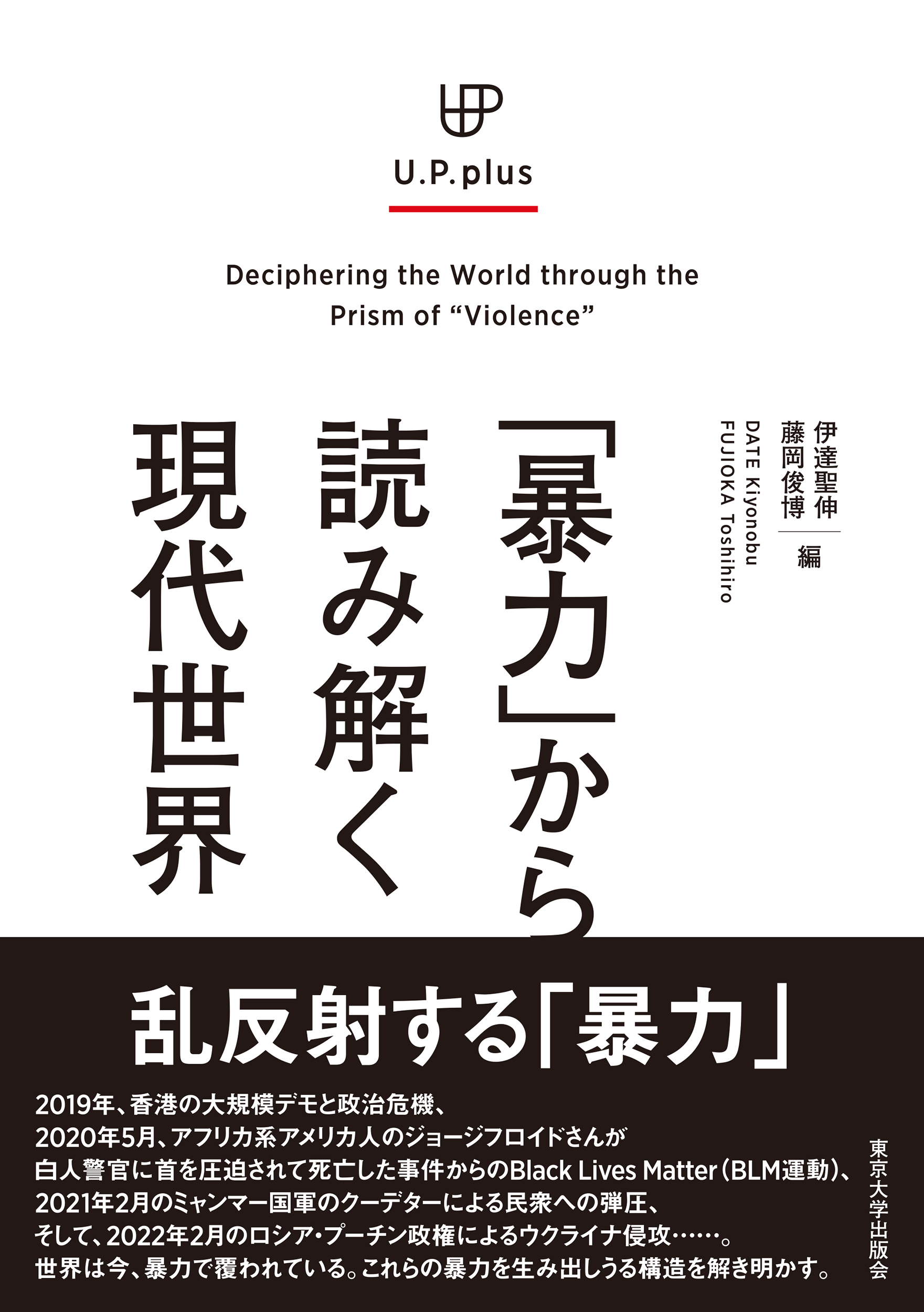
Title
Chikuma Shinsho Gendai Russia no Gunji-Senryaku (Military Strategy of Modern Russia)
Size
320 pages, paperback pocket edition
Language
Japanese
Released
May 06, 2021
ISBN
978-4-480-07395-2
Published by
Chikumashobo
Book Info
See Book Availability at Library
Japanese Page
Seven years ago, in 2014, Russia undertook a sudden military intervention in Ukraine. The main theme of my previous work, Geopolitics of Imperial Russia, was to ask, “why do these things happen between countries of the former Soviet Union?” However, this time in Military Strategy of Modern Russia, I have tried to shed light on these matters from a different viewpoint: “how did they do it?”
Russia’s military intervention in Ukraine differs greatly from the classical understanding of war. No declaration of war was made, and no national insignia were displayed by the Russian soldiers entering Ukrainian territory. Additionally, non-state actors such as militia, private military companies (PMCs), and Cossacks were involved in armed uprisings of locals. The methods of warfare used were not limited to military force, but also included the frequent use of non-military measures, such as cyber and information warfare.
“Hybrid warfare” is already an established phrase within the glossary of current affairs to describe this kind of struggle. However, when asked to define hybrid warfare, few are capable of giving a clear answer. First of all, this concept was developed by the United States Marine Corps, and it is premised on awareness of a critical question: “from Vietnam to Iraq, why does the U.S. military, which is the strongest on the globe, always lose to guerillas, who have inferior numbers and equipment?” Therefore, hybrid warfare is not something you can truly understand without possessing a very high level of military knowledge.
Second, for the previously mentioned reasons, hybrid warfare is a problematic concept for understanding Russia's methods of military engagement. The U.S. Marine Corps developed it based on its actual combat experiences, and Russia necessarily has different views on war and has developed different battlefield doctrine.
This text is intended to explain the previous two points in a way that the reader can easily understand. The United States and Russia can be roughly said to have reached substantially similar goals from different starting points. In certain situations, the army will be deployed but not always engage in combat. Even if armies do fight, the intended objective is not always victory. The means of warfare are not limited to violence, and non-military measures play a major role. These are some of the main characteristics.
However, this does not mean that the classic model of inter-states war will become a thing of the past. In the second half of this text, I try something a little unusual by analyzing Russian military exercises and maneuvers. As will be shown herein, the Russian military continues to prepare for large-scale warfare. Wars fought using non-classic methods and actors do not always conclude by those methods, meaning that ultimately we cannot rule out the possibility of an inter-state all-out war as described by Clausewitz.
In this way, the phenomenon that is war has not entirely “transformed” in recent years; rather, it should be thought of as having had its scope “broadened.” Therefore, in times such as these, how are we to ensure our country's national security, and is it possible to reduce the probability of war itself? As the author, I would be grateful if this work could serve as a catalyst for such thinking.
(Written by KOIZUMI Yu, Lecturer, Research Center for Advanced Science and Technology / 2021)



 Find a book
Find a book






